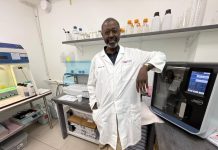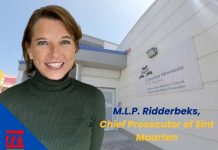GREAT BAY, Sint Maarten (DCOMM) – Large mats of Sargassum seaweed has inundated certain coastal areas of the country within the past week.
Sargassum is a type of brown seaweed which is distributed throughout the temperate and tropical oceans of the world, and in recent years, has become more frequent and widespread in the Caribbean region.
When sargassum makes landfall, it starts to decompose and releases hydrogen sulphide gas. The gas is colourless, toxic and highly flammable and spreads an unpleasant odour similar to rotten eggs.
Exposure to the gas, especially prolonged exposure, can cause irritation of the eyes, nose, throat, headaches, nausea, dizziness, and breathing problems in people who have asthma or respiratory conditions.
Groups most vulnerable to hydrogen sulphide gas exposure include the elderly, children, pregnant women, and those with pre-existing health conditions.
The Collective Prevention Services (CPS) of Sint Maarten is advising residents who live in coastal areas impacted by the decaying seaweed to keep windows and doors closed as much as possible to limit exposure to the gas.
Additional safety precautions include limiting the time spent on beaches with heavy sargassum accumulation. If cleaning sargassum seaweed, wear gloves and masks and proper footwear.
It is recommended for swimmers to avoid swimming where there are large plumes of decomposing seaweed in the immediate area.
Certain animals, especially dogs, are also sensitive to the inhalation of hydrogen sulphide.
If you have medical concerns, kindly consult your physician.




























